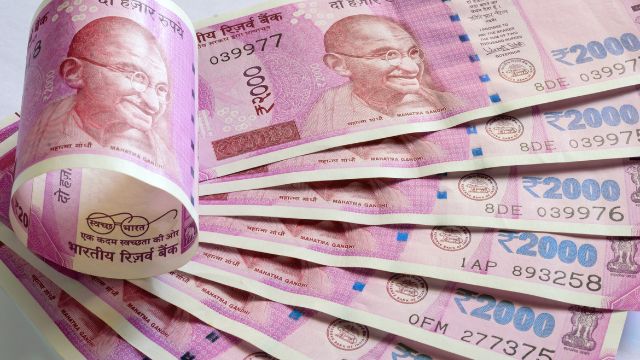In 2016, India underwent a seismic economic transformation through the implementation of a bold policy—demonetization of Rs. 500 and Rs. 1000 notes. This watershed moment, driven by the government’s resolve to combat corruption and eradicate black money, ignited a maelstrom of opinions and debates. The decision to invalidate high-denomination currency notes aimed at reshaping the nation’s financial landscape, fostering transparency, and promoting a shift towards digital transactions. Recently Indian government also announced the withdrawing of Rs. 2000 notes.
However, the consequences of this daring move were complex, with both advantages and disadvantages leaving an indelible mark on India’s economic narrative.
Let’s further get into the advantages and disadvantages of demonetization.
Advantages of Demonetisation
1. Curbing Black Money:
Demonetization’s primary objective was to flush out black money from the system. By invalidating high-denomination currency notes, the government aimed to expose illegal wealth and push for a more transparent economy.
2. Digital Transformation:
One of the unintended consequences was the surge in digital transactions. With cash in short supply, people turned to online payments, e-wallets, and digital banking, fostering a shift towards a less-cash economy.
3. Formalizing the Economy:
Demonetization encouraged businesses to formalize their operations. With a focus on digital transactions, more businesses entered the formal economy, leading to increased tax compliance and better economic tracking.
4. Crackdown on Counterfeit Currency:
By introducing new currency notes, demonetization dealt a blow to counterfeiters. The new notes incorporated advanced security features, making it harder for counterfeit currency to circulate.
5. Promotion of Financial Inclusion:
Demonetization encouraged individuals who were previously unbanked to open bank accounts. This move fostered financial inclusion, bringing more people into the formal banking sector.
6. Deterrence to Corruption:
The sudden invalidation of high-value currency notes acted as a deterrent to corruption. The fear of unaccounted wealth being exposed prompted a reevaluation of financial practices.
7. Real Estate Reforms:
The real estate sector, often plagued by the use of black money, witnessed a transformation. Demonetization, coupled with other reforms, led to increased transparency in property transactions.
8. Reduction in Cash Hoarding:
Demonetization discouraged the hoarding of large sums of cash. With the fear of sudden demonetization, individuals and businesses were inclined to keep lower cash reserves, promoting a more dynamic circulation of money.
9. Increased Tax Compliance Culture:
The push towards formal transactions fostered a culture of tax compliance. Individuals and businesses became more accustomed to reporting their financial activities, contributing to a more transparent tax ecosystem.
10. Parallel Crackdown on Shell Companies:
Demonetization was coupled with efforts to identify and eliminate shell companies. This parallel crackdown aimed to expose entities involved in dubious financial activities and further contribute to the fight against black money.
Disadvantages of Demonetisation
1. Economic Disruption:
The sudden withdrawal of 86% of the currency in circulation led to immediate chaos. Businesses, especially those reliant on cash transactions, were hit hard, causing a temporary economic slowdown.
2. Cash Shortages and Long Queues:
The initial aftermath witnessed long queues at banks and ATMs as people scrambled to exchange old notes. The shortage of new currency notes led to inconvenience and frustration among the public.
3. Impact on Informal Sector:
Small businesses, often operating in the informal sector, faced severe challenges. Many lacked the infrastructure for digital transactions, leading to financial setbacks and job losses.
4. Incomplete Success in Curbing Black Money:
Critics argue that demonetization did not entirely achieve its goal of eliminating black money. Some believe that those with ill-gotten wealth found ways to convert their money into other assets, evading scrutiny.
5. Impact on Agricultural Sector:
The agriculture sector, predominantly reliant on cash transactions, faced challenges during demonetization. Farmers struggled with the lack of liquid cash for purchasing seeds and other essentials.
6. Job Losses in the Informal Sector:
Small businesses in the informal sector, unable to cope with the shift towards digital transactions, faced closures and layoffs. Job losses in this sector were a significant social and economic challenge.
7. Inconvenience to the Public:
The abrupt nature of demonetization and the immediate cash shortage inconvenienced the general public. Everyday transactions became challenging, affecting people from all walks of life.
8. Slow Recovery for Small Businesses:
While formal businesses adapted to digital transactions, many small enterprises faced a prolonged recovery. Lack of access to credit and resources hindered their ability to bounce back quickly.
9. Strain on Banking Infrastructure:
The sudden surge in people rushing to banks for currency exchange and withdrawals strained the banking infrastructure. Banks faced challenges in managing the high volume of transactions, leading to operational difficulties.
10. Negative Impact on Consumer Spending:
The uncertainty and cash crunch during demonetization led to a decline in consumer spending. People became cautious with their expenditures, impacting various sectors of the economy.
11. Informal Borrowing Channels Disrupted:
Demonetization disrupted traditional informal borrowing channels, such as moneylenders. Individuals who relied on these channels for credit faced difficulties, contributing to financial hardships for some segments of the population.
Post-Demonetisation Scenario
1. Increased Tax Base:
Despite the initial hurdles, demonetization contributed to an expanded tax base. The government identified previously undisclosed income through data analysis and increased tax compliance.
2. Boost to Digital Payments:
The push towards a digital economy continued post-demonetisation. Digital payment methods have gained widespread acceptance, providing convenience and efficiency in transactions.
3. Recovery of Stashed Cash:
Authorities unearthed hidden stashes of cash during and after demonetization. Raids and investigations led to the discovery of undisclosed income, providing a boost to the government’s anti-corruption efforts.
4. Introduction of GST:
Post-demonetisation, the Goods and Services Tax (GST) was introduced, further contributing to economic reforms. GST is aimed at simplifying the taxation system and reducing tax evasion.
5. Focus on Digital Identity:
The government increased efforts towards creating a robust digital identity system with initiatives like Aadhaar. This strengthened the foundation for digital transactions and financial inclusion.
6. Global Recognition:
Demonetisation drew global attention, sparking discussions on the effectiveness of such bold economic measures. India’s move was viewed in the context of global efforts to tackle corruption and tax evasion.
On A Concluding Note
Demonetisation in India was a watershed moment that sparked intense debates. While it achieved certain objectives like curbing black money and promoting digital transactions, it also brought economic disruptions and challenges, particularly for the informal sector. As the nation navigated the aftermath, the long-term impact remains a subject of ongoing analysis and discussion. The journey from demonetization to a more transparent and formal economy continues, highlighting the complexities of implementing bold economic reforms.
Recommended
- CMS Info Systems Pvt Ltd Company
- Axis Bank Company
- Branch Banking Advantages and Disadvantages
- DBT (Direct Benefit Transfer) Scheme Advantages and Disadvantages
Anantha Nageswaran is the chief editor and writer at TheBusinessBlaze.com. He specialises in business, finance, insurance, loan investment topics. With a strong background in business-finance and a passion for demystifying complex concepts, Anantha brings a unique perspective to his writing.



